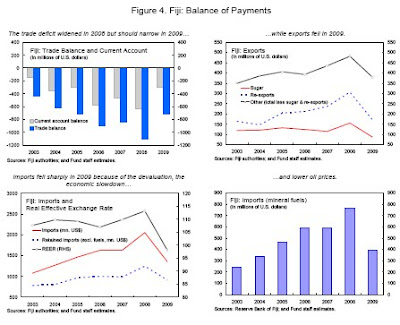A comprehensive package of structural reforms is being prepared by the authorities to spur growth and create jobs. This includes reforms to the civil service, public enterprises, public pension fund, and land-lease system—together with price liberalization. Staff noted the importance of well designed reforms to lift potential growth...
Land tenure reform is a key priority of the Government’s reform agenda. It is also an area that Staff and other multilateral institutions also consider as vital to raising the economic growth potential of the economy given large areas of unutilized arable land. The Government has formed a task force that will facilitate utilization of idle land for productive use. Land will be available for leases under this effort from the first quarter of 2010.
For Discussion: What do you think are the binding constraints to growth in Fiji?

Related:
Fisheries in the Economies of the Pacific Island Countries and Territories
Finding Balance-Making State-Owned Enterprises Work in Fiji, Samoa, and Tonga
IMF loan for Fiji seen as long-term liability
Doing Business - Fiji
WDI -Fiji
Binding Constraints in the Pacific





















.png)






















